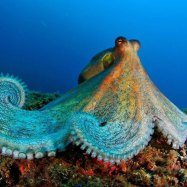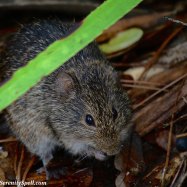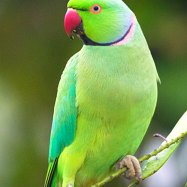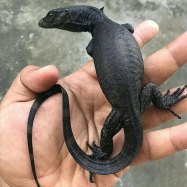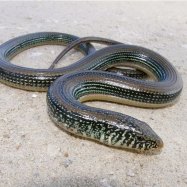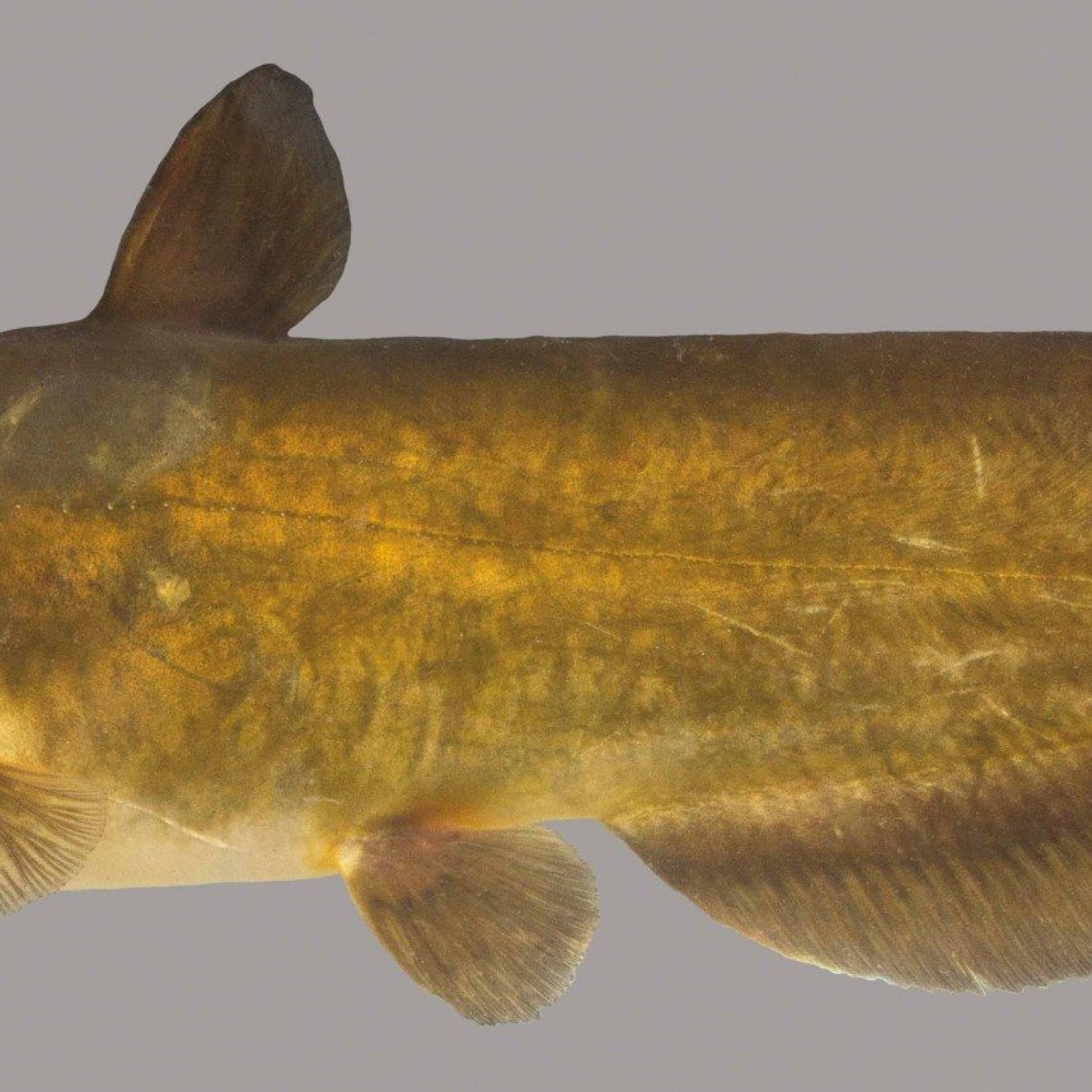
Yellow Bullhead Catfish
Up to 18 inches (45 cm)
Meet the Yellow Bullhead Catfish, a freshwater fish native to Eastern and Central North America. With a sleek, cylindrical body shape and a maximum length of 18 inches, these catfish are a common sight in rivers and lakes. Keep an eye out for these Ictaluridae family members to appreciate their beauty in their natural habitat. #YellowBullheadCatfish #NorthAmericanFish #FreshwaterCritters
Animal Details Summary:
Common Name: Yellow Bullhead Catfish
Kingdom: Animalia
Habitat: Freshwater rivers, streams, and lakes
The Unique and Colorful World of the Yellow Bullhead Catfish
The animal kingdom is full of fascinating creatures, each with its own unique features and characteristics. One such creature that often goes unnoticed is the Yellow Bullhead Catfish, scientifically known as Ameiurus natalis. These fish are a true representation of the wonder and diversity of nature, and in this article, we will delve into the world of these colorful and intriguing fish.The Yellow Bullhead Catfish is a type of catfish that belongs to the kingdom Animalia, phylum Chordata, and class Actinopterygii Yellow Bullhead Catfish. They are part of the order Siluriformes and the family Ictaluridae, making them relatives of other catfish such as the channel catfish and blue catfish.
These fish are commonly found in freshwater rivers, streams, and lakes, making up the majority of catfish species in North America. They are native to the United States and Canada, specifically in the eastern and central regions of the continent.
Appearance and Physical Characteristics
The Yellow Bullhead Catfish is a relatively small fish, typically growing up to 18 inches (45 cm) in length. They have a slender and cylindrical body shape, with a flattened head and a wide mouth. The skin of these fish is smooth and usually a yellow to olive-brown color on the back, while the belly is a creamy white or yellow.What makes the Yellow Bullhead Catfish unique and distinct from other catfish is its brightly colored body. Unlike other dull-colored catfish, these fish have a vibrant, almost neon yellow color that makes them stand out. This pigmentation is most prominent during their spawning season, where the males develop a richer and more vibrant yellow color on their head and fins Yellow Faced Bee.
Habitat and Feeding Habits
The Yellow Bullhead Catfish is a highly adaptable species, making them capable of thriving in a variety of habitats. They are most commonly found in freshwater sources such as streams, rivers, and lakes, where they prefer slow-moving, murky waters with muddy bottoms.These catfish are omnivorous, meaning they have a varied diet which consists of both plant and animal matter. They typically feed on a wide range of food sources such as insects, small fish, crustaceans, and even vegetation. Their keen sense of smell and taste allows them to detect food sources, even in low visibility waters.
Geographical Distribution
The Yellow Bullhead Catfish is endemic to North America and is widely distributed throughout the continent. They can be found in the eastern and central regions of the United States and Canada, where they are present in numerous lakes, streams, and rivers. Their distribution also extends to some parts of Mexico, where they are considered an invasive species.Due to their adaptability, these fish have also been introduced to other countries outside of their natural range, such as Europe, where they are known to reside in certain waterways. While they may not be common in these areas, their ability to thrive outside their native habitat highlights their resilience and adaptability.
Interesting Facts about the Yellow Bullhead Catfish
- The Yellow Bullhead Catfish is often referred to as the "lemon-nosed catfish" due to its bright yellow coloration on its nose and barbels.- The males of this species are protective fathers and build a nest for their eggs, often staying with them until they hatch.
- They are popular among freshwater anglers, as they are relatively easy to catch and provide a delicious meal.
- The record size for a Yellow Bullhead Catfish is 3 pounds and 15 ounces, caught in Illinois in 1993.
Conservation Status
The Yellow Bullhead Catfish is not considered a threatened or endangered species, and their population remains stable in their native range. They are also not subject to any commercial fishing restrictions, as they are not a major commercial fishery. However, in certain areas, these fish are faced with potential threats such as pollution, habitat destruction, and overfishing.As an abundant catfish species, their presence is vital in maintaining a balanced ecosystem in freshwater habitats. Therefore, it is essential to pay attention to their conservation and ensure that their natural habitat remains intact for future generations to enjoy.
Conclusion
In conclusion, the Yellow Bullhead Catfish is a highly unique and fascinating species that deserves more recognition. From their vibrant and colorful appearance to their interesting feeding habits and distribution, these fish have captivated the minds of many.As we continue to explore and learn more about the world around us, we must also appreciate and celebrate the diversity of these incredible creatures. The Yellow Bullhead Catfish serves as a reminder of the wonders of nature and its ability to adapt, thrive, and surprise us.
So, the next time you come across a bright yellow fish in a freshwater source, take a moment to appreciate the Yellow Bullhead Catfish and its unique place in the animal kingdom.

Yellow Bullhead Catfish
Animal Details Yellow Bullhead Catfish - Scientific Name: Ameiurus natalis
- Category: Animals Y
- Scientific Name: Ameiurus natalis
- Common Name: Yellow Bullhead Catfish
- Kingdom: Animalia
- Phylum: Chordata
- Class: Actinopterygii
- Order: Siluriformes
- Family: Ictaluridae
- Habitat: Freshwater rivers, streams, and lakes
- Feeding Method: Omnivorous
- Geographical Distribution: North America
- Country of Origin: United States, Canada
- Location: Eastern and Central North America
- Animal Coloration: Yellow to olive-brown on the back, with a yellow or cream-colored belly
- Body Shape: Slender and cylindrical
- Length: Up to 18 inches (45 cm)
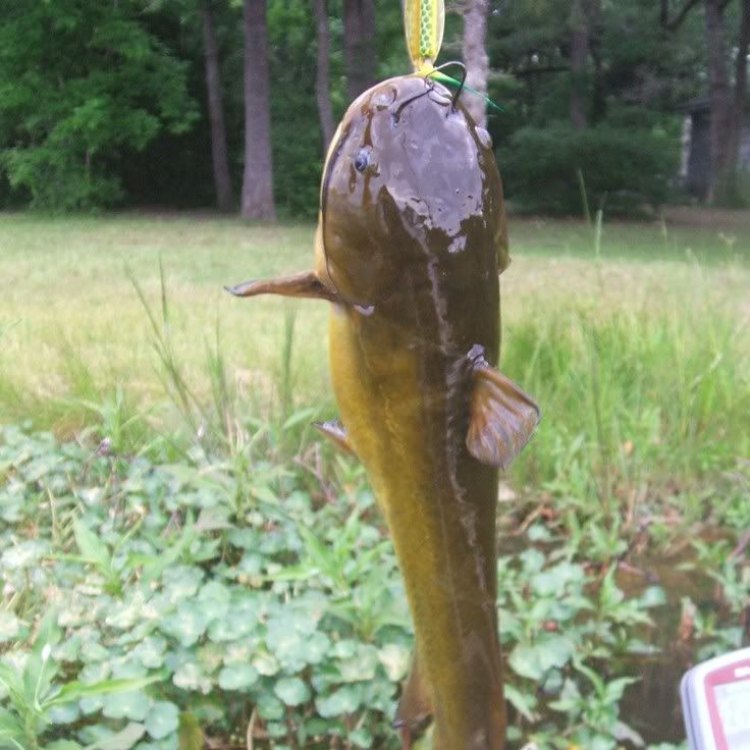
Yellow Bullhead Catfish
- Adult Size: 12-15 inches (30-38 cm)
- Average Lifespan: 5-8 years
- Reproduction: Egg-laying
- Reproductive Behavior: Males construct nests and guard the eggs
- Sound or Call: Not known to produce sounds
- Migration Pattern: No significant migrations
- Social Groups: Solitary
- Behavior: Nocturnal
- Threats: Habitat degradation, pollution
- Conservation Status: Not evaluated
- Impact on Ecosystem: Important role as a predator and scavenger
- Human Use: Sport fishing and aquarium trade
- Distinctive Features: Whisker-like barbels, sharp spines on the pectoral and dorsal fins
- Interesting Facts: Yellow bullhead catfish are nocturnal and primarily active during the night. They have a strong sense of smell and taste, which helps them locate food in the dark. They are highly adaptable and can tolerate a wide range of water conditions. When threatened, they can inflate their bodies and lock their spines to deter predators.
- Predator: Large fish, birds of prey, mammals
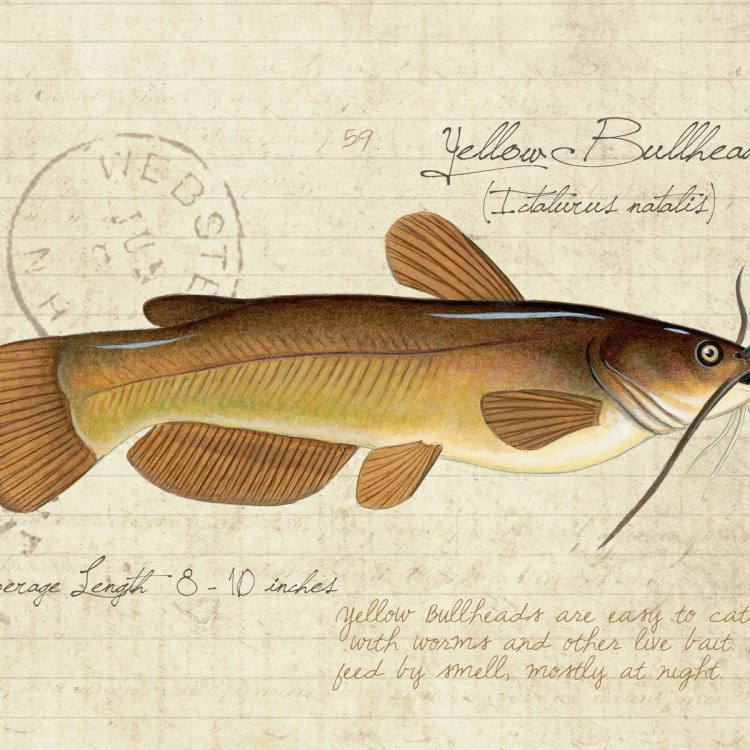
Ameiurus natalis
The Elusive Yellow Bullhead Catfish: A Unique and Adaptable Predator
When one thinks of catfish, images of large, slimy bottom-dwellers often come to mind. However, among the diverse family of catfish, there is one species that stands out with its distinctive yellow color and adaptive behavior – the Yellow Bullhead Catfish.Native to North America, the Yellow Bullhead Catfish (Ameiurus natalis) is a freshwater fish that can be found in lakes, ponds, and slow-moving rivers. Despite being relatively unknown compared to its better-known catfish cousins, the Yellow Bullhead holds many unique features and plays an important role in the ecosystem PeaceOfAnimals.Com.
They may not be the most visually striking fish, but their fascinating biology and behavior make them a fascinating species to explore.
Distinctive Features
At first glance, the Yellow Bullhead may look like any other catfish. However, upon closer inspection, it's easy to spot their defining features. As their name suggests, they have a distinct yellow coloration on their body, making them stand out among their dark-colored relatives.One of the most distinctive features of the Yellow Bullhead is its whisker-like barbels that protrude from their face. The barbels, just like a cat’s whiskers, are used to help them navigate and locate food in the dark murky waters they inhabit.
But perhaps the most noteworthy feature of the Yellow Bullhead is the sharp spines on its pectoral and dorsal fins, which are used as a defense mechanism against predators. These spines are capable of inflicting harm to potential predators, providing them with an extra layer of protection.
The Life of a Yellow Bullhead
The Yellow Bullhead can reach an adult size of 12 to 15 inches (30-38 cm) and has an average lifespan of 5-8 years Yellow Cobra. They are known to be very adaptable, able to thrive in a wide range of water conditions, from warm, stagnant ponds to fast-flowing rivers.They are nocturnal creatures, primarily active during the night. This behavior is due to their excellent sense of smell and taste, which helps them locate food in the dark. As opportunistic feeders, they consume a variety of food sources, including insects, crayfish, smaller fish, and even some plant matter.
Due to their solitary nature, the Yellow Bullhead does not have a complex social structure. They prefer to live and hunt alone, only coming together during the spawning season.
Reproduction and Behavior
The Yellow Bullhead follows an egg-laying reproductive strategy, with breeding taking place during early summer. Males will construct nests out of debris and vegetation in shallow areas of water and guard the eggs until they hatch.After hatching, the male continues to protect the fry from potential predators, only abandoning them when they are big enough to fend for themselves. It's worth noting that Yellow Bullhead males do not eat during the spawning period, dedicating all their time and energy to protecting their offspring.
Threats and Conservation Status
The Yellow Bullhead is not evaluated on the IUCN Red List, meaning their conservation status is currently unknown. However, like many freshwater fish species, their population is facing threats due to habitat degradation and pollution.Human activities such as urbanization, agriculture, and industrialization have a significant impact on the waterways that the Yellow Bullhead calls home. These activities can lead to a decrease in water quality, making it challenging for the fish to survive.
Role in the Ecosystem
Despite their small size, the Yellow Bullhead plays an important role in the ecosystem as a predator and scavenger. As a nocturnal hunter, they feed on a wide range of smaller fish, insects, crustaceans, and even dead animals.As scavengers, they play a crucial role in keeping the waters clean by consuming decaying plant and animal matter. This process helps prevent potential harmful algae blooms and keeps the overall ecosystem in balance.
Human Use
The adaptability and hardy nature of the Yellow Bullhead make them a popular choice in both sport fishing and the aquarium trade. In the wild, they are often caught for recreational fishing, known for their strong fight and delicious taste.In captivity, they require a large tank and special care due to their aggressive nature and potential to outgrow smaller tanks. Despite this, they are still a favorite among aquarium hobbyists due to their unique appearance and interesting behavior.
Predators
Just like any other animal, the Yellow Bullhead has its fair share of predators. In the wild, they face threats from larger fish, birds of prey, and even mammals such as raccoons, otters, and minks.To protect themselves, the Yellow Bullhead has a few defense mechanisms up its sleeve. As mentioned earlier, they can inflate their bodies and lock their spines when threatened, making it difficult for predators to swallow them. They also have a mucus coating on their skin, making them slimy and hard to grasp.
Interesting Facts
Despite their relatively simple appearance, the Yellow Bullhead is full of surprises and interesting facts. Here are some fascinating facts about this elusive catfish:- The Yellow Bullhead is known by several other names, including mudcat, black bullhead, and horned pout.
- They have sensitive taste buds all over their body, making them highly receptive to different aromas.
- Yellow Bullhead males have larger heads and more prominent pectoral fins compared to females.
- Their diet consists of approximately 70% insect matter.
- Yellow Bullhead catfish can live up to 20 years in captivity.
In Conclusion, the Yellow Bullhead may not be the most iconic species of catfish, but they are fascinating animals with many unique features and behaviors. From their bright yellow color to their sharp spines and nocturnal habits, they have evolved to thrive in various conditions and play a vital role in their ecosystem.
Despite facing threats from human activities, the Yellow Bullhead continues to adapt and survive, a testament to their resilience and adaptability. As one of the lesser-known catfish species, perhaps it's time for us to appreciate and learn more about this underrated and fascinating fish.
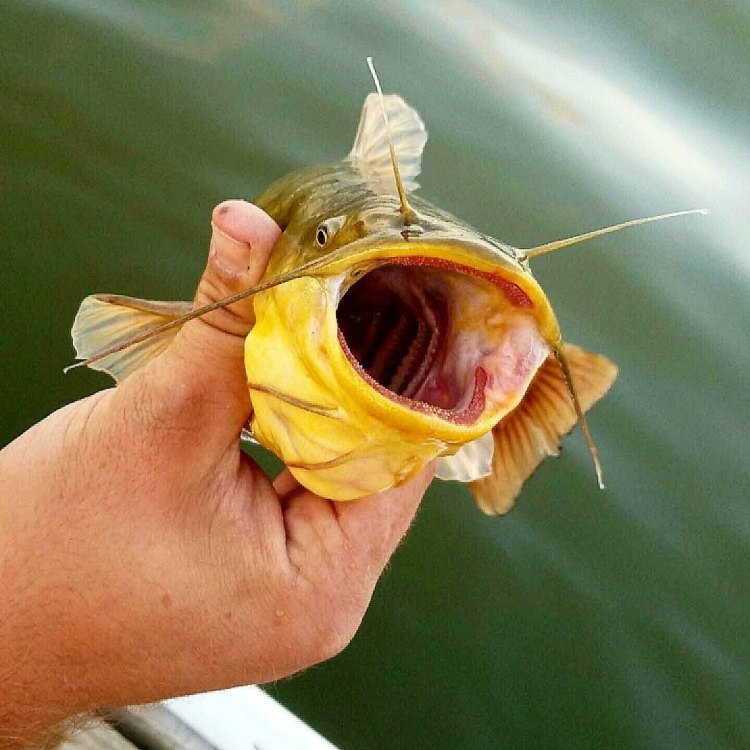
The Unique and Colorful World of the Yellow Bullhead Catfish
Disclaimer: The content provided is for informational purposes only. We cannot guarantee the accuracy of the information on this page 100%. All information provided here may change without prior notice.





